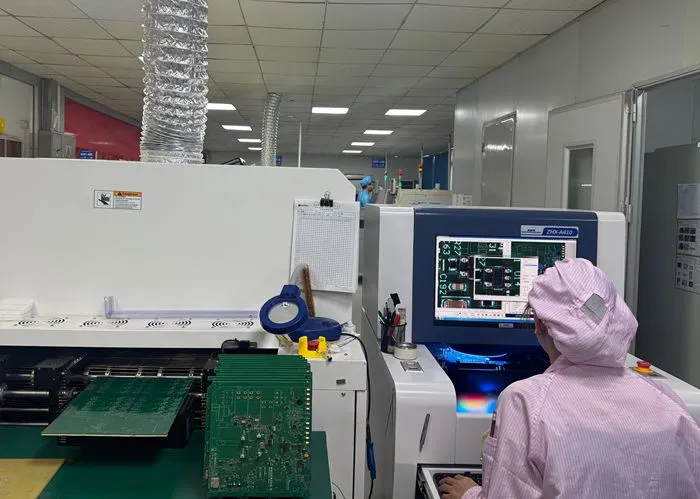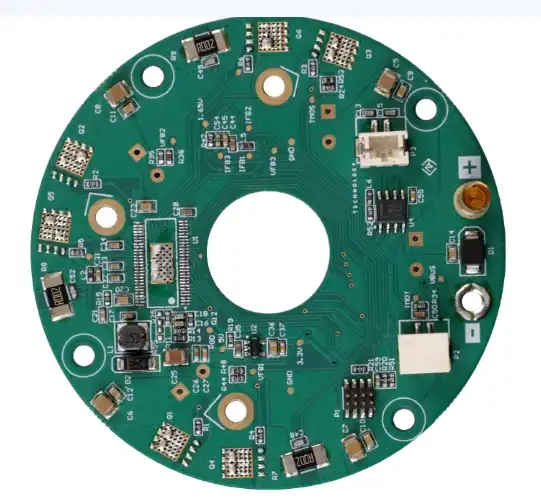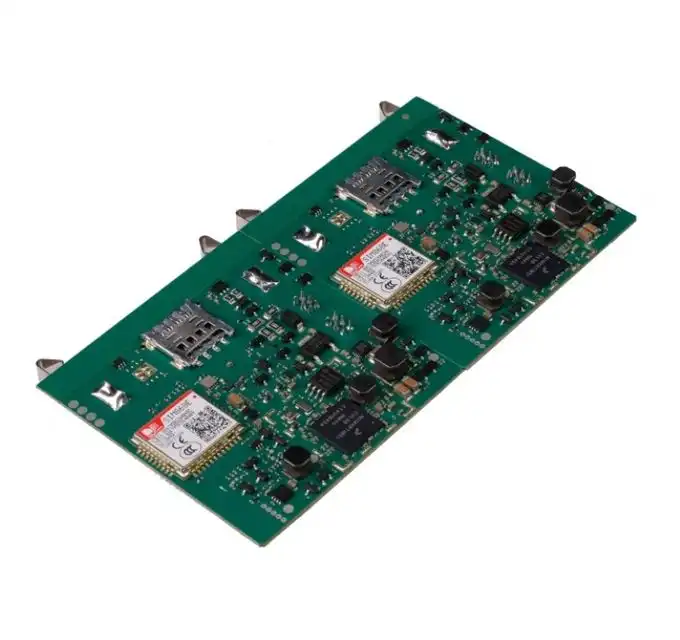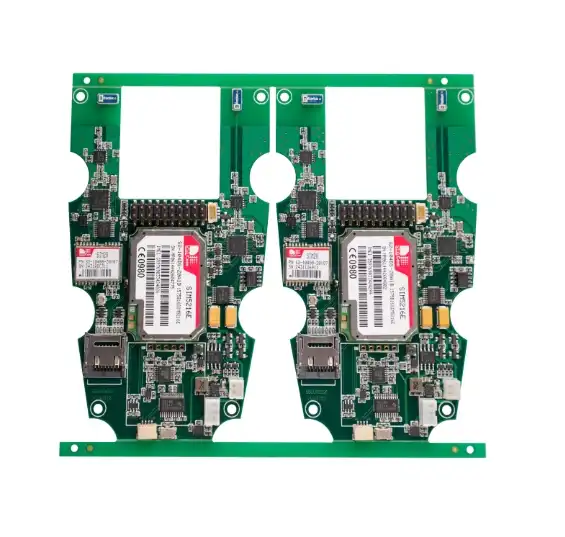Understanding ICT Testing in PCB Assembly
ICT Testing, or In-Circuit Testing, is a crucial step in the PCB assembly process that focuses on verifying the integrity of individual components and their connections on the circuit board. This method of testing is particularly effective for identifying manufacturing defects such as solder shorts, open circuits, and incorrect component values.
The ICT process typically involves using a specialized fixture known as a "bed of nails." This fixture contains numerous spring-loaded pins that make contact with specific test points on the PCB. These test points are predetermined during the PCB design phase, allowing for comprehensive testing of each component and connection.
Key Advantages of ICT Testing
ICT Testing offers several benefits in PCB assembly:
- High-speed testing capabilities, allowing for rapid identification of defects
- Precise measurement of component values and parameters
- Ability to detect manufacturing faults that may not be visible to the naked eye
- Reduced need for manual inspection, increasing efficiency in the assembly process
However, ICT Testing does have some limitations. It requires careful planning during the PCB design phase to ensure adequate test point access. Additionally, the initial setup costs for ICT equipment and fixtures can be substantial, especially for complex, multilayer PCBs.
ICT Testing in Complex PCB Assemblies
As PCB designs become more complex, with high-density interconnects (HDI) and multilayer structures, ICT Testing faces new challenges. Advanced techniques such as flying probe testing and boundary scan testing have been developed to address these issues, allowing for effective testing of densely packed components and hidden connections in multilayer boards.
For high-reliability applications, such as automotive or industrial-grade PCBs, ICT Testing plays a crucial role in ensuring long-term performance and low failure rates. The ability to detect minute faults early in the assembly process contributes significantly to the overall quality and reliability of the final product.
Exploring FCT in PCB Assembly Testing
Functional Circuit Testing (FCT) is a comprehensive approach to PCB assembly testing that evaluates the overall performance of the assembled circuit board. Unlike ICT, which focuses on individual components, FCT simulates real-world operating conditions to verify that the PCB functions as intended.
FCT is typically performed after ICT Testing and other preliminary tests have been completed. It involves applying power to the board and simulating various input conditions to observe the outputs and behavior of the circuit. This testing method is crucial for identifying issues that may not be apparent through component-level testing alone.
Key Aspects of FCT in PCB Assembly
FCT encompasses several important elements:
- Verification of overall circuit functionality under normal operating conditions
- Testing of complex interactions between components and subsystems
- Evaluation of performance parameters such as power consumption and signal integrity
- Identification of intermittent faults that may not be detected by static tests
One of the challenges in FCT is developing comprehensive test scenarios that cover all possible operating conditions. This often requires in-depth knowledge of the circuit's intended functionality and potential failure modes.
Advanced FCT Techniques in Modern PCB Assembly
As electronic devices become more sophisticated, FCT techniques have evolved to keep pace. Modern FCT may incorporate elements such as:
- Automated test equipment (ATE) for high-speed, repeatable testing
- Environmental stress screening to evaluate performance under extreme conditions
- Boundary scan testing for accessing deeply embedded components
- Integration with ICT and other test methods for a holistic testing approach
For complex assemblies like flexible or rigid-flex PCBs, FCT plays a crucial role in verifying the integrity of interconnections and the overall flexibility of the board. Similarly, for high-frequency applications, FCT is essential in evaluating signal integrity and electromagnetic compatibility.
Integrating ICT and FCT for Comprehensive PCB Assembly Testing
While ICT and FCT are distinct testing methodologies, their integration is key to ensuring thorough quality assurance in PCB assembly. A well-designed testing strategy incorporates both methods to leverage their respective strengths and provide comprehensive coverage.
The synergy between ICT and FCT allows for a multi-layered approach to defect detection and quality assurance. ICT excels at identifying manufacturing defects at the component level, while FCT ensures that the assembled PCB performs its intended functions correctly.
Balancing ICT and FCT in the Assembly Process
Determining the optimal balance between ICT Testing and FCT depends on several factors:
- Complexity of the PCB design
- Production volume and throughput requirements
- Cost considerations for test equipment and fixtures
- Specific quality and reliability standards for the end product
For high-volume production of relatively simple PCBs, a greater emphasis might be placed on ICT to quickly identify and rectify manufacturing defects. In contrast, for low-volume, high-complexity assemblies, a more extensive FCT process might be warranted to ensure perfect functionality.
Advanced Testing Strategies in Modern PCB Assembly
Modern PCB assembly testing often goes beyond traditional ICT and FCT, incorporating additional methods to ensure the highest quality:
- Automated Optical Inspection (AOI) for visual defect detection
- X-ray inspection for hidden solder joints in BGA and other complex packages
- Thermal imaging for identifying hot spots and potential reliability issues
- Environmental stress screening to simulate long-term use conditions
These advanced techniques, combined with ICT and FCT, form a comprehensive testing strategy that addresses the challenges of modern PCB assembly, including high-density designs, mixed-signal circuits, and demanding reliability requirements.

Conclusion
Understanding the differences and complementary nature of ICT Testing and FCT is crucial for effective PCB assembly testing. While ICT provides rapid, detailed analysis of individual components and connections, FCT ensures the overall functionality and performance of the assembled board. The integration of these methods, along with advanced testing techniques, is essential for producing high-quality, reliable PCBs that meet the demanding standards of today's electronic products.
For OEMs and companies seeking reliable PCB assembly services, it's crucial to partner with a manufacturer that employs a comprehensive testing strategy. Look for PCB assembly suppliers and manufacturers who offer both ICT and FCT capabilities, along with additional quality assurance measures like AOI and X-ray inspection. This ensures that your assembled PCBs meet the highest standards of quality and reliability, whether you're producing high-volume consumer electronics or specialized industrial-grade boards.
FAQ
What are the main advantages of ICT in PCB assembly testing?
ICT offers high-speed testing, precise component measurement, and early defect detection, improving overall assembly efficiency.
How does FCT differ from ICT in PCB testing?
FCT evaluates the overall functionality of the assembled PCB under simulated operating conditions, while ICT focuses on individual component testing.
Can ICT and FCT be used together in PCB assembly?
Yes, combining ICT and FCT provides comprehensive testing coverage, leveraging the strengths of both methods for optimal quality assurance.
Advanced PCB Manufacturing and Assembly Solutions | Ring PCB
At Ring PCB, we offer cutting-edge PCB manufacturing and assembly solutions tailored to your specific needs. Our advanced engineering capabilities include high-density stack-ups, multilayer PCBs, and HDI technology. With our state-of-the-art facility and comprehensive testing processes, including ICT and FCT, we ensure the highest quality and reliability for your PCB projects. Contact us at [email protected] to learn how our one-stop PCB and PCBA services can streamline your production process and deliver superior results.
References
1. Johnson, S. (2022). "Comprehensive Guide to PCB Assembly Testing: ICT vs FCT". Journal of Electronics Manufacturing, 15(3), 78-92.
2. Zhang, L., & Chen, X. (2021). "Advanced Testing Methodologies in Modern PCB Assembly". IEEE Transactions on Electronics Packaging Manufacturing, 44(2), 156-170.
3. Miller, R. (2023). "Optimizing Test Strategies for High-Reliability PCB Assemblies". Quality Assurance in Electronics, 18(4), 225-240.
4. Brown, A., & Davis, T. (2022). "Integration of ICT and FCT in High-Volume PCB Production". International Journal of Manufacturing Technology, 55(6), 789-805.
5. Lee, K., & Park, J. (2023). "Emerging Trends in PCB Assembly Testing for Next-Generation Electronics". Advanced Manufacturing Processes, 30(2), 112-128.






